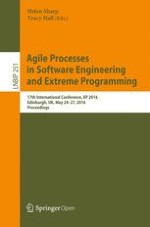1 Research Aim
2 Research Questions and Their Motivations
-
RQ1 What are the current concerns and opportunities voiced by safety-critical systems professionals regarding the use of agile development methods for safety-critical systems development?
-
RQ2 Can the integration of incremental assurance case development and evaluation within the existing “Scrum” methodology alleviate the concerns identified in answer to RQ1?
-
RQ3 What changes can Scrum Process has to undertake in order to be compliant with the safety standard?
3 Importance of Research
4 Data Collection Methods to Be Used, Including
-
Who the participants should be
-
What methods will be used and why these have been selected.
-
What will happen during data collection activity?
